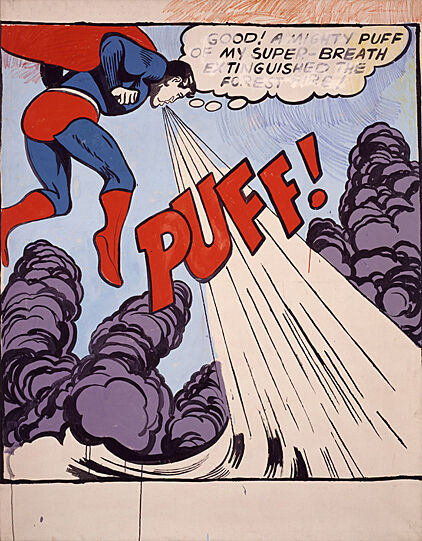Andy Warhol— From A to B and Back Again | Art & Artists
Nov 12, 2018–Mar 31, 2019
Andy Warhol— From A to B and Back Again | Art & Artists
Hand-Painted Pop
2
In the early 1960s, Warhol—along with artists such as Rosalyn Drexler, Roy Lichtenstein, Claes Oldenburg, and James Rosenquist—began exploring the signs and symbols of postwar America, creating the movement that came to be known as Pop art. He began to make paintings of subjects in mass circulation, such as front-page headlines, cartoons, and advertisements, astutely selecting images ranging from singular and iconic to humorous and campy.
“I was never embarrassed about asking someone, literally, "what should I paint?" because Pop comes from the outside, and how is asking someone for ideas any different from looking for them in a magazine?”
Superman, 1961
Warhol’s depiction of Superman is based on a drawing by Kurt Schaffenberger from the comic Superman’s Girl Friend Lois Lane (April 1961). Warhol’s decision to use Superman as a subject may offer a biting commentary on the heroic machismo associated with Abstract Expressionist “action” painting, or a queer reading of the Man of Steel, or both. Warhol displayed Superman and four other paintings shortly after they were made in a window display at the Bonwit Teller department store (below), where he and many other artists produced window displays.





